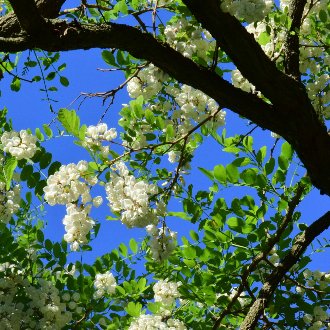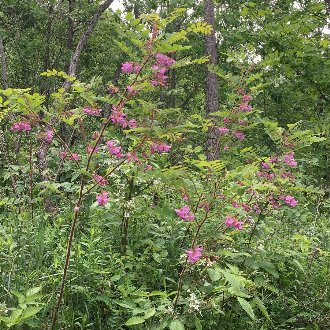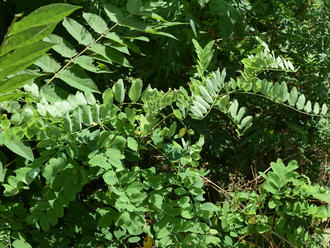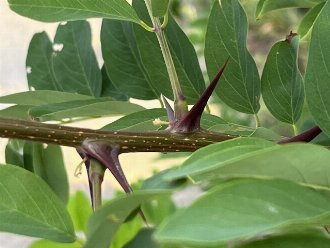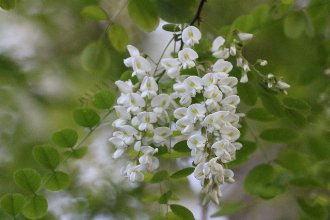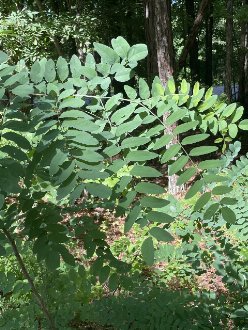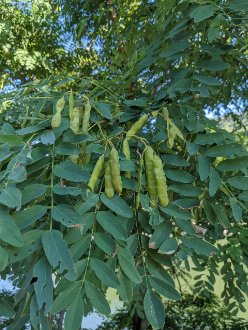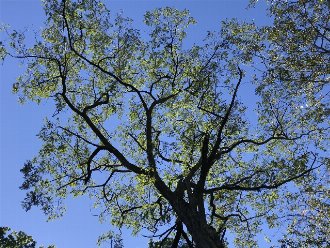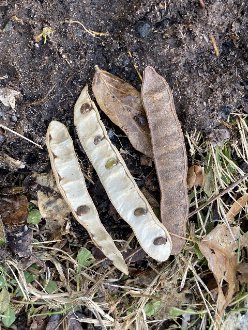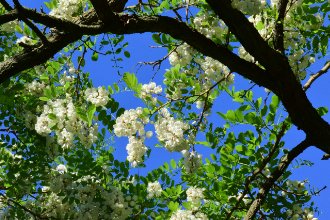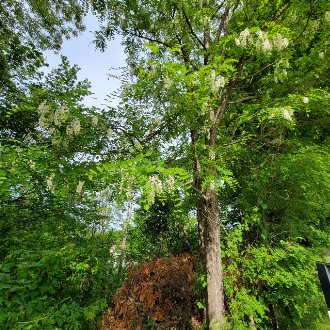Black Locust (Robinia pseudoacacia L.)
↑Summary
A nitrogen-fixing tree native to North America, having expanded its range in nearly all directions due to human intervention.
↑Range - Expand
| Legend | Color |
| Native | |
| Expanded | |
| Native or Expanded | |
| Expanded or Not Present |
This tentative map is based on our own research. It may have limited data on Canada and/or Mexico, and there is some subjectivity in our assignment of plants as introduced vs. expanded. Read more in this blog post.
Although this plant occurs somewhere in each of these regions, it may only occur in a small part of some or all of them.
Black locust has been widely planted, and frequently escapes cultivation, but also spreads readily on its own, taking advantage of humans clearing land and depleting soils. We marked the entire new range of this species as expanded because it is contiguous with its native range and more-or-less completely connected with only small gaps.
↑Similar Plants
↑Habitat
An early successional species on most sites. Found in full sun in open habitats with exposed soil, and following large-scale disturbances in forests such as fire, which have created conditions suitable for its survival. Black locust requires extensive disturbance; gaps caused by removal of one to a few trees are usually insufficient to create enough light for it to survive.
Naturally found in areas that have burned, areas cleared by landslides or avalanches, and occasionally areas defoliated by severe insect infestations. Also favored by anthropogenic disturbances, including logging, mining, and abandonment of agricultural fields and pastures. Also found in urban areas, in vacant lots, roadsides and railroads.
Black locust heavily alters the habitat around it, increasing soil nitrogen. In the long-run, this favors the establishment of more shade-tolerant trees that will eventually replace it on most sites.
↑Links & External Resources
• Black Locust | The Wood Database (About This Site)
• Black Locust | Fire Effects Information System (FEIS) (About This Site)
• Robinia pseudoacacia (Black Locust) | Illinois Wildflowers (About This Site)
• Robinia pseudoacacia (Black Locust) | USDA PLANTS Database (About This Site)
• Robinia pseudoacacia | Go Botany (About This Site)
• Robinia pseudoacacia (Black Locust) | Missouri Botanical Garden Plant Finder (About This Site)
• Black Locust | Virginia Tech Dendrology Factsheets (About This Site)
• Black Locust | Silvics of North America (About This Site)
• Robinia pseudoacacia | Biota of North America Project (BONAP) (About This Site)
• Robinia pseudoacacia | NatureServe Explorer (About This Site)
• Robinia pseudoacacia | Missouri Plants (About This Site)
• Black Locust | Maryland Biodiversity Project (About This Site)
• Robinia pseudoacacia L. (Black Locust) | Digital Atlas of the Virginia Flora (About This Site)



